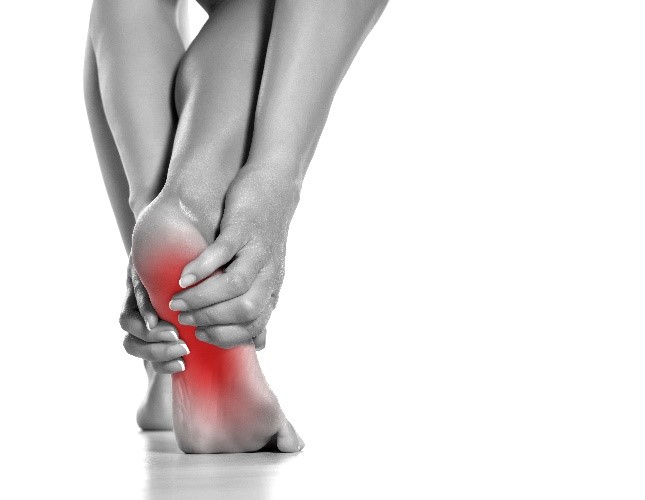Dem Bones, Dem Bones …

As the old adage goes, the foot bone’s connected to the ankle bone, the ankle bone’s connected to the leg bone and so on up the body. It is a mantra well worth subscribing to, particularly in the case of foot pain or, more specifically, plantar fasciitis [PF]. Now firstly, lets be clear, there are many causes for foot and ankle pain. Plantar fasciitis is just one of fifty plus causes of foot pain so diagnosis is never simple.
Working a day a week at Red Roof Podiatry Clinic, I often have clients present with foot pain. Many of these present with the classic PF symptoms of heel pain first thing in the morning. To resolve these issues a thorough assessment of the foot and ankle mechanics is obviously needed, but looking in isolation is rarely the solution.
Muscles and tendons of the lower leg blend with the plantar fascia and, if these structures are weak or tight, they may cause dysfunction and pain. Tight calf muscles are often the culprit, but tight calves often go hand in hand with tight hamstrings and tight hamstrings can be the result of neural tension, poor spinal and pelvic mechanics or muscle imbalances. That is just one very brief scenario and it is not uncommon to ‘chase the pain’ further up the kinetic chain until the real cause of the problem can be identified.
The moral of this short and very simplified post is, therefore, not to simply look at a point of pain but to look elsewhere for the root causes. In the case of plantar fasciitis that steroid injection the doctor may suggest is, more often than not, an Elastoplast to deal with the pain symptoms without ever addressing the root causes.